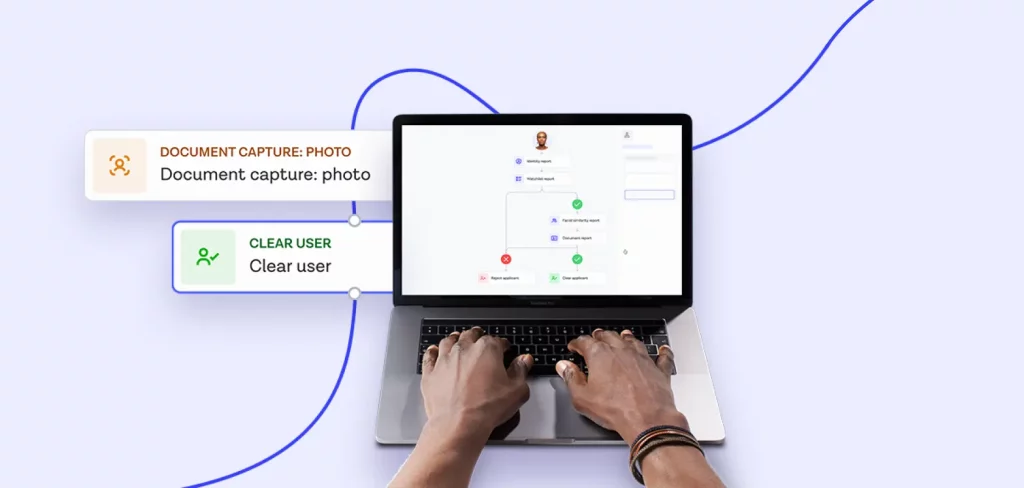Discover the impact RegTech has on compliance, risk, cost, and customer experience. KPMG, Innovate Finance, and Onfido share their insights.
You may be wondering “What is RegTech and how does it impact my business”? Regtech (or regulatory technology) is any technology that businesses use to help them comply with regulations. This includes compliance data management, fraud prevention and reporting. The aim of RegTech is to help businesses comply with these regulations in a more efficient and cost-effective way.
RegTech meaning and history
The 2008 global financial crisis was a pivotal moment in the development of RegTech companies. In the wake of the crisis, regulators introduced many new laws to prevent such a crisis from happening again. This meant financial institutions had to get to grips with more laws and more complex regulations than they ever had before.
At the same time, cutting-edge technologies such as artificial intelligence, big data, cloud computing and machine learning were rapidly developing. So it was only natural that RegTech evolved to help the sector streamline compliance management.
How does RegTech work?
Regtech helps to automate many of the processes businesses would otherwise do manually. By improving efficiencies, RegTech helps businesses adhere to regulatory requirements — specifically know your customer (KYC) and anti-money laundering (AML) obligations. This can help take some of the strain off internal teams and resources.
Different RegTech solutions all work slightly differently, but will often incorporate artificial intelligence (AI) and machine learning. These technologies help verify customer identities, monitor transactions, conduct due diligence and sanctions screening, as well as identifying potential fraud.
What is an example of RegTech?
Some of the common tasks that RegTech solutions automate include: monitoring transactions, risk assessment, and checking regulatory changes in real-time. RegTech can also help generate reports, and flag potentially fraudulent activity.
Onfido’s Real Identity Platform is an example of a RegTech solution. Onfido’s platform helps businesses to streamline their regulatory compliance processes. For example, reducing business and reputational risk by addressing varied and evolving regulatory requirements. Onfido's workflow builder helps businesses respond to changing regulations by building automated and unique workflows that move users through different risk profiles.
What technologies are used in RegTech?
Some of the technologies that power RegTech solutions include:
- AI
- Machine learning
- Cloud computing
- Blockchain technology
- Big data and analytics
Many of these technologies are similar to those leveraged in Fintech and suptech. They offer several benefits to businesses, including increasing efficiency and improving accuracy.
What are the benefits of RegTech?
The rise of digital has provided more opportunities for fraudulent activities, such as data breaches, money laundering and identity fraud. Plus an increasingly complex regulatory landscape means financial institutions are spending more resources (both time and money) on compliance management. Regulators are also imposing financial penalties, including large AML fines, on any financial institution that fails to meet compliance requirements.
All of this puts a strain on traditional compliance teams. It takes much longer for humans to source and analyze data the way that technology can. The use of technology offers several benefits, including:
- Streamlined compliance management: Different RegTech companies help protect against different types of risk, including data management, data breaches, and fraud prevention. RegTech can also help reduce reporting timelines. Technology is likely to pick up on any issues quicker than a human would. This means businesses can report suspicious activity to authorities faster.
- Increased efficiency: As regulators continue to introduce new regulations, it’s going to become impossible for compliance teams to manage without using technology. Technology like AI can process large amounts of data much quicker than humans and extract valuable insights.
- Improved accuracy: Human error is natural and influenced by many factors. So manual processes can result in errors or gaps in compliance management. Technology operates at the same level of accuracy regardless of the time of day or how long it has been running. Improved accuracy means less risk exposure for the business.
- Internal alignment: By using technology, information becomes much more visible across teams and the wider business. People can share information much faster which gives better insights across different departments.
- Better customer experience: RegTech can also help improve the experience for businesses’ end users. For regulated industries, such as financial services, they must perform customer due diligence and know your customer (KYC) checks on customers. The faster and more efficient these checks are, the quicker customers can access a business’s services.
What is RegTech in banking?
Regulated industries like financial services are those most likely to benefit from using RegTech. RegTech solutions help banks and other financial institutions comply with regulatory bodies.
Banks in particular deal with large amounts of data daily. Internal compliance teams might find it too time-consuming, expensive and complex to manage without technological support.
This is where RegTech comes in. Technology offers analytical tools for banks to comb through data and identify potential risks. This way banks can comply with regulations while saving time and money.
What is the difference between RegTech and Fintech?
The main difference between RegTech and Fintech is that Regtech refers to regulatory technology whereas Fintech refers to financial technology. While there is some crossover between the two, RegTech focuses specifically on streamlining the regulatory processes. It also doesn't solely apply to financial institutions. Whereas, Fintech refers to a wide range of financial services functions that use technology. This can include money transfers, electronic deposits, and managing investments, to name a few.
Like RegTech, the 2008 financial crash propelled the development of Fintech. Since then it has been in a phase of rapid development, fuelled by startups that have disrupted the financial services market.
This overlap of financial services and technology has created fresh challenges for regulators. So as Fintech has evolved, so has the need for developments within RegTech.
RegTech versus suptech
Suptech, which stands for supervisory technology, includes technological solutions that help supervisory authorities (such as regulators) oversee compliance.
Financial institutions must comply with rules and regulations. Supervisory bodies are responsible for making sure that financial institutions comply with these regulations to the required standards. Examples of US regulatory bodies include the Securities & Exchange Commission (SEC) and Commodity Futures Trading Commission (CFTC). The Financial Conduct Authority operates in the UK.
So just as financial institutions use RegTech to help them comply with regulations, regulators use suptech to help them oversee compliance with those regulations. The main difference is who uses it and how. RegTech addresses the needs of banks, Fintechs and other financial institutions, whereas suptech supports supervisors and regulators.
Suptech provides similar benefits for regulators that RegTech provides for financial institutions, helping them be more efficient and reduce costs.
Where does Onfido fit in your RegTech stack?
RegTech’s primary concern is helping businesses manage their compliance requirements more efficiently across several areas.
Onfido helps businesses satisfy global compliance needs through identity verification, supporting KYC and AML requirements.
- ID record verification helps businesses navigate regulatory requirements at speed, without adding additional friction to your user experience. We validate user information against comprehensive databases in seconds, so you can fulfill regulatory requirements and age verification needs globally.
- Proof of address (PoA) report is an enhanced part of our verification process. It's built to enable the capture, verification and upload of PoA documents across the US, Canada, UK and Europe. This helps businesses meet KYC and AML requirements without compromising on user experience.
- Watchlist monitoring helps businesses navigate AML requirements with the latest data. Fast. Not all databases are created equal. Onfido’s Watchlist database is continually refreshed, indexed and offers ongoing monitoring, so there’s no compromise on reliability or speed.
Read our compliance manager's guide to learn about the regulatory landscape, and how effective identity verification can help in navigating it.





